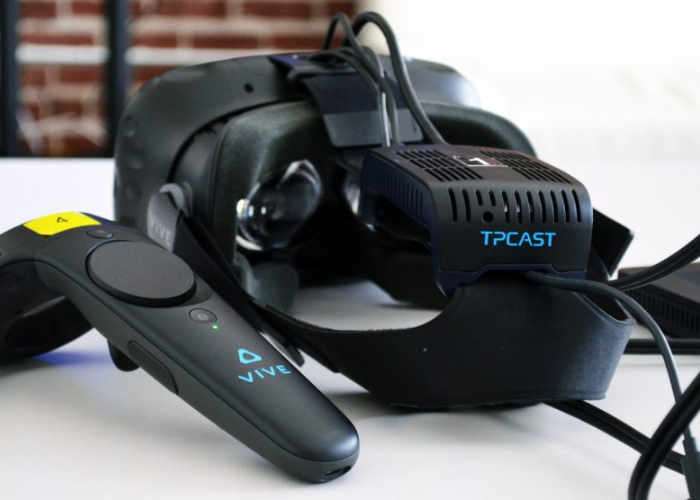
TPCAST, the innovative developers behind the 60GHz wireless VR add-on for the HTC Vive, have recently announced a Business Edition of their groundbreaking technology. This new edition is designed to allow up to six units to operate simultaneously in one local space without interference, making it a significant advancement for multi-user virtual reality experiences.
Enhanced Multi-User Capability
The Business Edition of the TPCAST wireless VR kit addresses a critical need in the VR industry: the ability to support multiple users in a shared space. This is particularly beneficial for businesses, arcades, and training environments where multiple participants need to interact within the same virtual environment. By enabling six units to work concurrently without interference, TPCAST is paving the way for more collaborative and immersive VR experiences.
TPCAST is a member of HTC’s Vive X accelerator program, which supports startups in the VR and AR space. The company has already begun shipping the consumer version of the wireless adapter in China and aims to expand the availability of this cutting-edge technology to other regions in the coming months. This expansion is eagerly anticipated by VR enthusiasts and professionals alike, who are looking forward to the enhanced freedom and flexibility that wireless VR offers.
Technical Challenges and Solutions
One of the main challenges in developing a multi-user wireless VR system is avoiding interference between units. TPCAST has tackled this issue by utilizing the 60GHz frequency band, which provides a high data transfer rate and low latency, essential for a seamless VR experience. However, even with this advanced technology, some challenges remain, particularly related to occlusion.
As noted by the specialist virtual reality site Road To VR, while it’s novel to have multiple wireless VR players in the same local space tracked by one pair of SteamVR Tracking base stations, occlusion problems can become more prevalent. Occlusion occurs when one user’s body or controllers block the tracking signals of another user, potentially disrupting the VR experience. TPCAST’s Business Edition mitigates this issue by allowing each player to be tracked with their own base stations if necessary, ensuring a more reliable and uninterrupted experience.
Moreover, the Business Edition can be used to enable wireless play in separate player ‘stalls’ that are close to each other. This setup is ideal for VR arcades or training facilities where multiple users need to engage in VR activities simultaneously but within their own designated spaces.
For those interested in a deeper dive into the TPCAST wireless VR system, the Road To VR website offers a comprehensive hands-on review. The review provides valuable insights into the performance, setup, and user experience of the TPCAST system, making it a must-read for anyone considering this technology.
While it’s novel to be able to have multiple wireless VR players in the same local space tracked by one pair of SteamVR Tracking base stations, occlusion problems will become more prevalent. Of course, the Tpcast BE could also be used to enable wireless play on separate player ‘stalls’ that are right near each other, but each tracked with their own base stations.
The introduction of the TPCAST Business Edition is a significant milestone in the evolution of wireless VR technology. By addressing the challenges of multi-user environments and providing a robust solution for businesses and entertainment venues, TPCAST is setting a new standard for what is possible in virtual reality.
For more detailed information and to read the full hands-on review, visit the Road To VR website by following the link below. This resource offers an in-depth look at the capabilities and potential applications of the TPCAST wireless VR system.
Source: Road2VR : TPCAST
Latest Geeky Gadgets Deals
Disclosure: Some of our articles include affiliate links. If you buy something through one of these links, Geeky Gadgets may earn an affiliate commission. Learn about our Disclosure Policy.